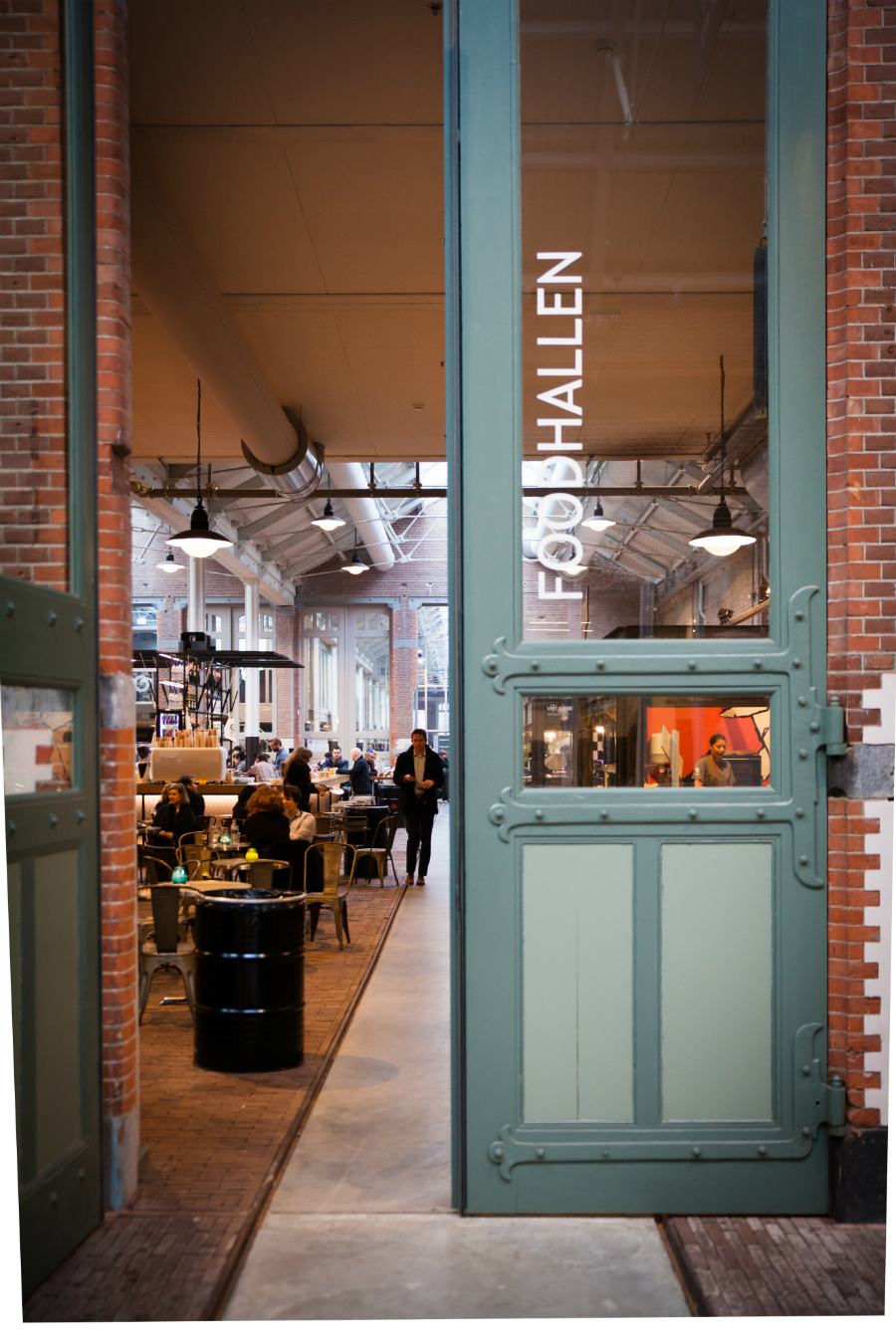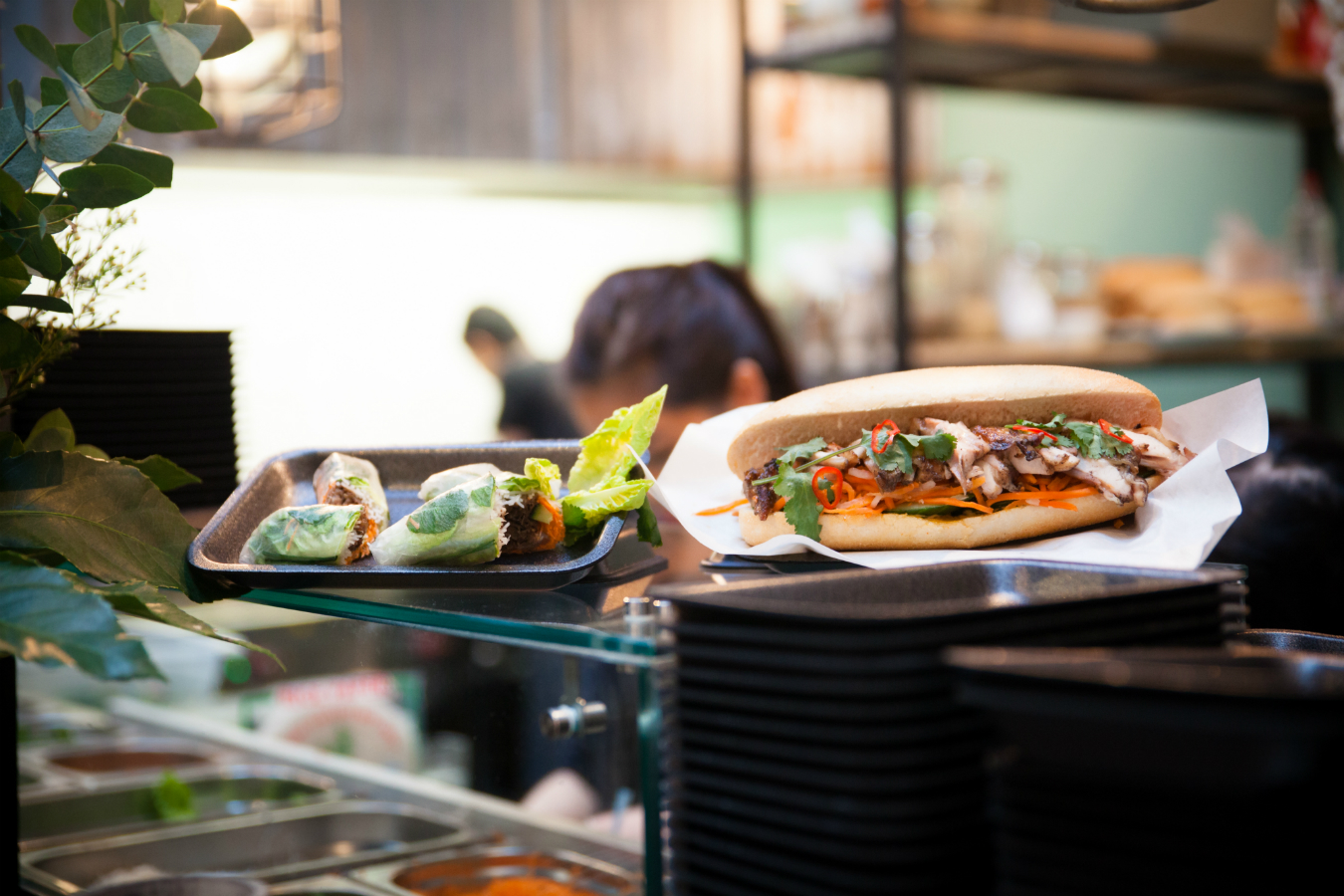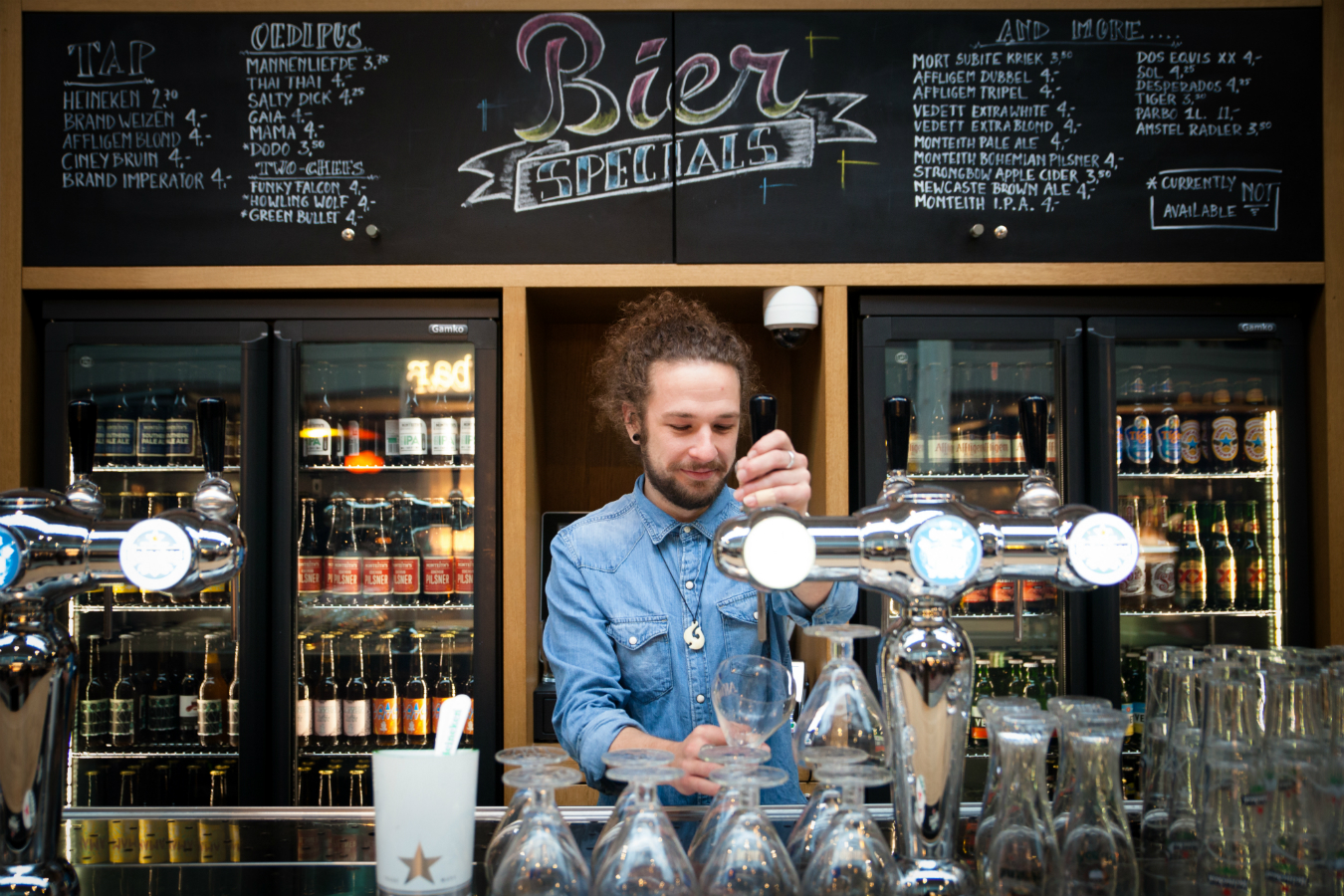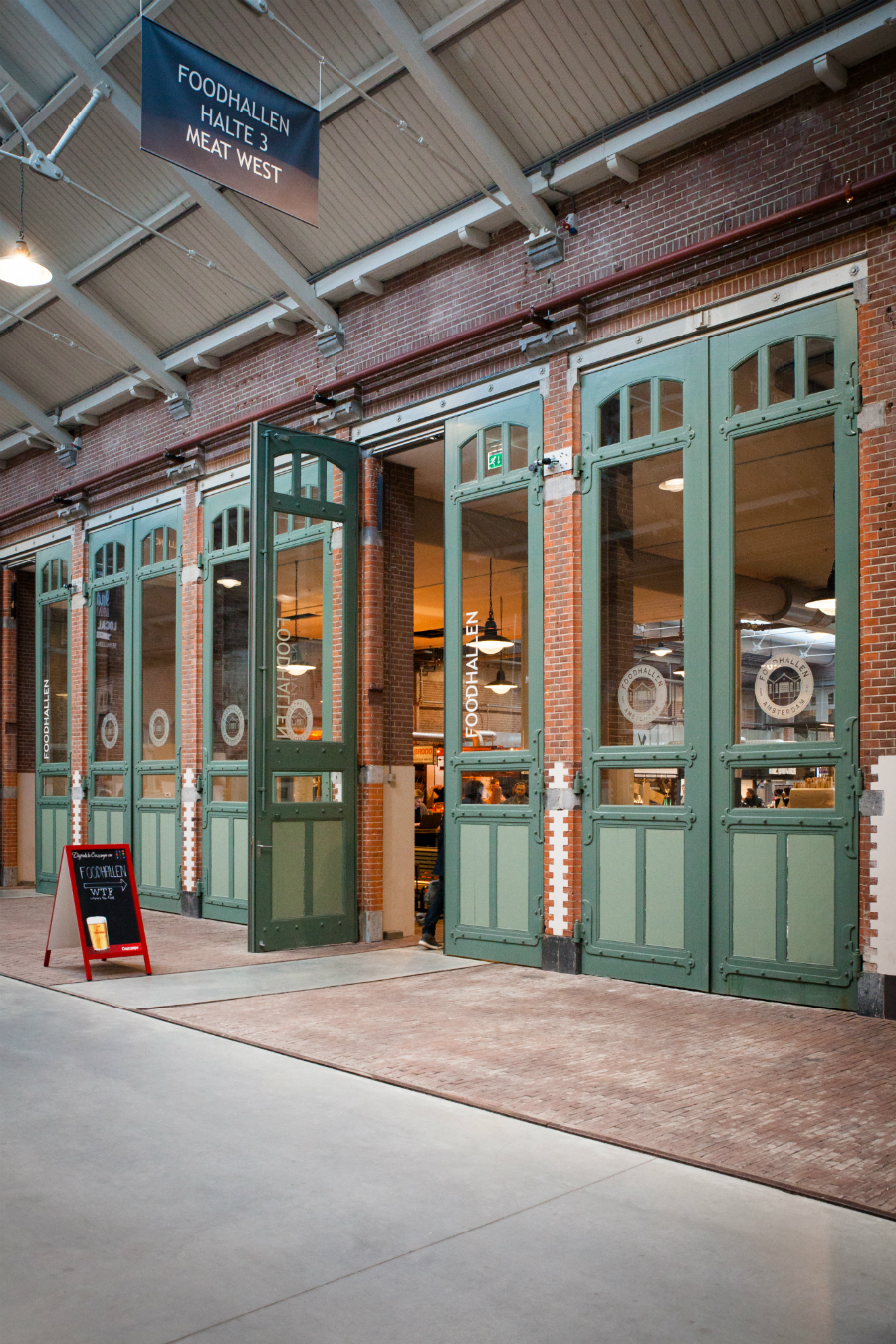Foodhallen Amsterdam
From tram lines to epicurean designs.
While the horns no longer sound and the tracks no longer rattle under the weight of approaching streetcars, the tram depot in Amsterdam’s emerging Oud-West neighbourhood remains as busy today as it was a century ago. This former transportation hub has undergone an extensive restoration, transforming it into a thriving cultural centre. Known as De Hallen, the space hums day and night with visitors who flock to its cinemas and boutiques, galleries and hotel, along with its main attraction: the Foodhallen indoor market.
Taking inspiration from London’s Borough Market and the Mercado de San Miguel in Madrid, Foodhallen is a welcome addition to the city’s dining scene, paying homage to historic food markets while simultaneously pushing the envelope. Upwards of 20 vendors have set up shop under the vaulted ceiling of the preserved heritage building, creating a platform where local food entrepreneurs are able to showcase carefully-executed culinary concepts. Just as Amsterdam’s food culture is heavily influenced by the country’s past colonial endeavours, Foodhallen also represents this varied, global gastronomic landscape. On any given day, hungry patrons line up in droves for a taste of the Australian meat pies and Vietnamese bánh mì, while nearby stalls do a brisk business doling out Turkish delicacies like manti (a type of meat dumpling) and plates of raclette.
Operating on the motto that less is more, each restauranteur in Foodhallen offers only a few signature dishes, or in the case of De BallenBar, just one focus: the Dutch croquette. It’s a high-end take on a traditional favourite, with fillings of truffle, chorizo, and bouillabaisse, all developed by the owners’ former employer, Michelin-starred chef Peter Gast. At Shirkhan, a stall which elevates Mumbai street food, chef Hariprasad Shetty imported a handmade clay oven—complete with a gold mosaic façade—so his patrons could experience the succulent lamb kebabs and perfectly crisped naan bread that only a tandoor oven can deliver.
All told, the city’s foodie elite would be hard-pressed to find a more appealing place to sate their appetite than inside this century-old monument. Not unlike how the building ushered in the era of electric trams a century ago, its present-day tenant is using this very same space to propel Amsterdam’s food culture into new and unexplored culinary territory. And so far, they seem to be on the right track.












